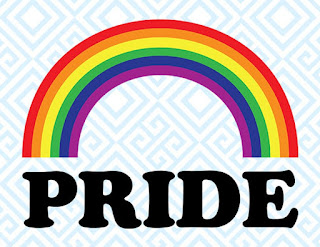It's arguable that lips are one of the key defining features of the human being. For whilst most other mammals possess them, only we have lips that are permanently on display thanks to an outward curling of the interior mucous membranes.
Thus Deleuze and Guattari are right to suggest that just as the human mouth is a deterritorialization of the animal snout, the lips are a subsequent deterritorialization of the mouth, designed - amongst other things - to reterritorialize (and to suckle) on the maternal breast.
Later, of course, the lips will play an important part in the act of eating solid foods - and in speech; again, one of the defining characteristics of man is the fact that he stuffs his mouth with words as well as sausage rolls.
Finally, due to an overabundance of nerve endings, the lips are extremely sensitive and therefore play a significant role in sexual acts, such as kissing; described by D. H. Lawrence as the primary sensual connection.
Lips, then, are crucial to our survival and to our pleasure.
I have to admit, however, that the pale, thin lips of modern women that offer the delicate spiritual kisses of those who act exclusively from the upper plane of consciousness, don't really excite my interest unless they have been cosmetically enhanced with that fabulous mix of oils, waxes, pigments and emollients known as lipstick ...
Lipstick gives back to even the meanest and most refined of mouths a certain savage beauty.
Thus Deleuze and Guattari are right to suggest that just as the human mouth is a deterritorialization of the animal snout, the lips are a subsequent deterritorialization of the mouth, designed - amongst other things - to reterritorialize (and to suckle) on the maternal breast.
Later, of course, the lips will play an important part in the act of eating solid foods - and in speech; again, one of the defining characteristics of man is the fact that he stuffs his mouth with words as well as sausage rolls.
Finally, due to an overabundance of nerve endings, the lips are extremely sensitive and therefore play a significant role in sexual acts, such as kissing; described by D. H. Lawrence as the primary sensual connection.
Lips, then, are crucial to our survival and to our pleasure.
I have to admit, however, that the pale, thin lips of modern women that offer the delicate spiritual kisses of those who act exclusively from the upper plane of consciousness, don't really excite my interest unless they have been cosmetically enhanced with that fabulous mix of oils, waxes, pigments and emollients known as lipstick ...
Lipstick gives back to even the meanest and most refined of mouths a certain savage beauty.
Notes
Gilles Deleuze and Félix Guattari, A Thousand Plateaus, trans. Brian Massumi (University of Minnesota Press, 1987): see '10,000 BC: The Geology of Morals (Who Does the Earth Think It Is?)'.
D. H. Lawrence, Fantasia of the Unconscious, ed. Bruce Steele, (Cambridge University Press, 2004): see 'The Five Senses'.
Click here for a related post to this one in which I expand upon my love of lipstick (with reference to the work of Baudelaire and to the case of Cleopatra).












